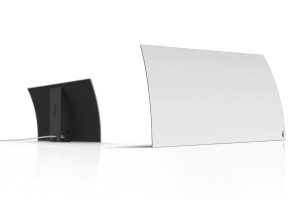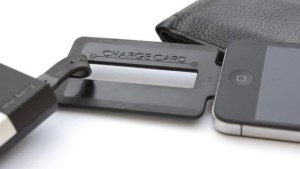Some people say that the tech gadget as a Christmas present is dead, thanks to the many functions that smartphones provide. But I say that’s not true. I have plenty of tech devices on my list for Santa. So here, just in time for Black Friday and Cyber Monday, are my picks for top tech gifts to give this holiday season.
- Looking for a tablet? My pick is the Google Nexus 7. The 7-inch device packs a 1080-pixel high-definition display, weighs just over a half-pound, has built-in wireless charging, a quad-core Qualcomm Snapdragon S4 Pro processor and 2GB of RAM. And with a starting price of $229 for the 16GB, Wi-Fi only model, you don’t have to mortgage your house to pay for it.

- You don’t have to spend a lot of money to get a geek a memorable gift. Anyone who loves MacBooks and Legos will love these Lego-style decals that turn your laptop keyboard into a touch-typing teacher’s dream. It’s only $18 at iStickr, the online MacBook decals store.

- Here’s a gift that can save you money. Just plug the Mohu Curve 30 high-definition TV antenna into a digital TV and kiss Time Warner cable goodbye! Made to plug-and-play, the Curve 30 provides free access to over-the-air TV broadcast channels in full 1080 HD TV. The Curve 30 is ideal for urban dwellers living in close proximity to a broadcast tower, within 30 miles. It costs $50.

- For the young, or at least young at heart who like to pull practical jokes, Klutz makes Gotcha Gadgets. The electronics kit has everything you need — except a 9-volt battery — to build 20 gizmos to help you prank your friends and family. Aimed at youngsters age 8 and up, the kit costs $25.

- Another plug-and-play gift is the Dropcam Pro, a cloud-based Wi-Fi video monitoring service with free live streaming, two-way talk (“Rover! Get off that conch!”) and remote viewing. Nanny cams were never this easy to set up. The camera costs $199 plus a monthly fee to store video in the cloud.

- Here’s another entry on the low end of the cost spectrum. Check out the Chargecard from Nomad. It’s a charging cable for your smartphone, GPS devices, tablets and anything that takes a micro USB port (or Apple lightning port) that is the size of a charge card and the width of two of them. And it costs only $25.

- Wearable tech is the latest buzz phrase, and the Pebble smart watch is the hot choice this holiday season. For $150, you get a watch that connects to your smartphone via Bluetooth, has customizable faces and straps, gets notifications from your phone, runs apps, is waterproof and lasts up to a week on one charge. Yes, it has a monochrome e-paper display, but it’s half the price of Samsung’s color touch-screen Galaxy Gear and works with many more smartphones.

- It’s hard to use smartphones as speakerphones and still understand what’s being said. Jawbone has the answer: its Jambox. It comes in three sizes (Mini, $179; regular, $149; and Big, $299) and a slew of bright colors. It comes with an app (iOS 7 only) that lets owners stream music from their phones. And the Apple Store at Destiny is jam-packed with them.

- Here’s a stocking stuffer that’s on my wish list, the Star Trek Closed Communicator iPhone 5 case. (Are you reading this, Welych family??) For $20, your favorite sci-fi fan can declare his or her loyalty in the Star Trek vs. Star Wars epic fandom battle. It’s available on Cafe Press. And for an extra dollar, toss in the Star Trek Communicator app to ensure the sounds are accurate, too.

- If you know someone who would like to watch Internet on a TV but isn’t very tech savvy, you can’t do better than the Roku 3 HD streaming media player. It’s easy to set up, comes with its own remote, and costs $100. (Three earlier models that work on virtually any TV cost $80 and less.) The company recently added universal search that lets viewers look for a single show or movie across its channels, including Netflix, HuluPlus and Amazon OnDemand.

- If money is no obstacle, gamers would certainly appreciate getting one of the two new consoles coming out this fall. While reviews for both the PlayStation 4 ($399) and the Xbox One ($499) have been tepid at best, many don’t want to wait for the fixes and would rather find a console under the Christmas tree. The PS4 had problems with its launch. We’ll have to see how the One does on Friday (Nov. 22).
Bits & Pieces
- If you like movies and love classic video games, then CineFIX’s 8-bit Cinema is just the ticket. Each video tells an abridged version of the movie in 8-bit style, a la “Donkey Kong,” although sometimes the creators add a few 16-bit scenes.
- Gartner predicts that by 2017 smartphones will appear to be smarter than people because the data stored in the cloud will provide them with the computational ability to make sense of the information they have. For instance, the phone will wake you up early for a meeting with your boss if there is heavy traffic.
- Last year’s game “Football Manager” had a bit of code that let developers track the IP address of everyone who pirated the game. The results? More than 10 million illegal copies were created, mostly in China, Turkey and Portugal. Biggest surprise? One copy was made at the Vatican.
- Ikea launched an app in August that uses augmented reality to help consumers see how furniture would look in their home. Customers first open Ikea’s printed catalog and aim their smartphone or tablet camera at a cross at the bottom of the page to access to augmented reality mode. Next, they close the catalog and place it on the spot they intend to place the new piece of furniture. A virtual image of the furniture item will be shown on the device’s screen with the room in the background. Customers can reposition the virtual furniture simply by touching the screen.
- Video game study No. 1: A British study that followed 11,000 video game-playing children for 10 years has found that playing the games from as young as 5 years old had absolutely no effect on the child’s attention, behavior or emotional issues. Television, however, did affect some participants, specifically children between the ages of 5 and 7. The study saw a small increase in behavioral problems for young children exposed to television for more than three hours a day.
- Video game study No. 2: 48 percent of adults age 50 and older say they play video games, according to research released by the Entertainment Software Association. The report found that 80 percent of these gamers play video games on a weekly basis and 45 percent play on a daily basis.









